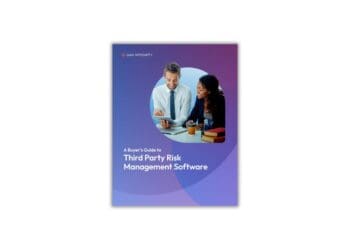3 Arguments for Integrating RMIS and GRC Processes
Gartner suggests that integrated risk management (IRM) is the next evolution of risk management practices. This piece from Riskonnect’s Dawn Ward explores IRM practices and what they mean specifically for GRC and enterprise risk.
As risk controls and appetites evolve, managers continue to work toward improving their risk management programs. They’re becoming more informed about governance, risk and compliance (GRC) processes and how these can be leveraged with risk management information systems (RMIS) to better identify and mitigate risks. However, some managers still experience a disconnect.
For many, this disconnect stems from a lack of understanding the long-term benefits. Merging GRC processes with RMIS brings numerous advantages to enterprise operations, but many leadership teams fail to grasp the enterprise-wide changes they bring, opting instead to leave these as independent processes. So why should management teams look to merge GRC and RMIS processes?
Here are three reasons why you should consider integrating these risk areas to elevate your risk management operations.
1. Integration Helps Companies Stay Aligned with Corporate Strategy
Given the complexities of today’s risk environment, even the most buttoned-up risk management programs can suffer from overlooking or missing risk impactors, causing them to deviate from their corporate strategy. However, employing an integrated risk management (IRM) strategy can centralize all potential and emerging risk information, providing managers and their teams with better visibility into and alignment with corporate operations. An integrated risk management program also improves accessibility to governance and compliance guidelines while allowing for the customization of these guidelines for specific teams or departments, which encourages engagement. The result is a safer and more accountable work environment, focused on creating a culture of ethics while reducing work-related injuries.
2. Integration Enables the Development of a Cohesive Risk Management Program
Far too often, enterprise risk programs operate within independent silos featuring their own software systems and data pools. The resulting environments bring havoc to companies of all sizes and locations, as the inability to properly view and act upon cross-departmental situations means enterprises are exposing themselves to risk and compliance infractions.
By integrating GRC processes with RMIS, enterprises can vastly increase their risk visibility. Doing so enables management teams to better track, monitor and act upon emerging risks, identify risk management trends and properly shape their remediation strategies. The result is a more cohesive risk management program that allows risk management teams to shift from reactive to proactive remediation approaches.
3. Integration Improves Enterprise-Wide Communication
With an integrated risk management approach in place, streamlining enterprise communication becomes a little easier with centralization. Managers are able to retain all enterprise resources in one location, which improves accessibility, encourages enterprise-wide engagement and facilitates education. This centralization ensures everyone is working from the same risk framework and enhances the root cause analysis process when dealing with organizational issues and findings.
Additionally, policy management is a critical part of a risk program, so it’s important that leadership teams are able to easily communicate on policy processes. This allows them to operate in a collaborative environment and follow uniquely designed distribution workflows. Not only can ineffective workflows increase risks and compliance issues, they also strengthen the silos that are sure to lead to policy inconsistencies. By relying on an integrated system to facilitate the creation, review, approval and distribution of enterprise processes, organizations can better manage employee compliance procedures and reduce non-compliance risks.
The Bottom Line
GRC and RMIS are only components of risk management, they’re not all inclusive. True maximization of both only happens when they work together. By relying on an integrated risk management approach, managers increase visibility and are able to sustain a proactive plan for addressing risks. Risks are inevitable, but managers can be much more vigilant by merging their unique GRC components with the proper RMIS solution.



 Dawn Ward is a seasoned risk management and internal controls professional who is currently focused on assisting companies implementing governance, risk and compliance (GRC) programs utilizing Riskonnect software applications. Dawn provides training, guidance and mentoring to both internal and external stakeholders through training sessions, co-hosting webinars and career development initiatives. Dawn’s current passion is expanding her expertise further into areas of risk management, including cybersecurity.
Dawn Ward is a seasoned risk management and internal controls professional who is currently focused on assisting companies implementing governance, risk and compliance (GRC) programs utilizing Riskonnect software applications. Dawn provides training, guidance and mentoring to both internal and external stakeholders through training sessions, co-hosting webinars and career development initiatives. Dawn’s current passion is expanding her expertise further into areas of risk management, including cybersecurity.









